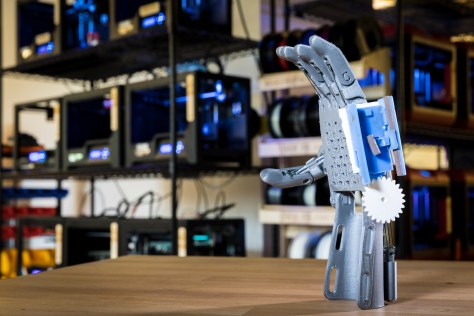Maker culture in health care is on the rise with the rapid adoption of consumer-grade fabrication technologies. However, little is known about the activity and resources involved in prototyping medical devices to improve patient care. In this paper, we characterize medical making based on a qualitative study of medical stakeholder engagement in physical prototyping (making) experiences. We examine perspectives from diverse stakeholders including clinicians, engineers, administrators, and medical researchers. Through 18 semi-structured interviews with medical-makers in US and Canada, we analyze making activity in medical settings. We find that medical-makers share strategies to address risks, define labor roles, and acquire resources by adapting traditional structures or creating new infrastructures. Our findings outline how medical-makers mitigate risks for patient safety, collaborate with local and global stakeholder networks, and overcome constraints of co-location and material practices. We recommend a clinician-aided software system, partially-open repositories, and a collaborative skill-share social network to extend their strategies in support of medical making.
“Point-of-Care Manufacturing”: Maker Perspectives onDigital Fabrication in Medical Practice. Udaya Lakshmi, Megan Hofmann, Stephanie Valencia, Lauren Wilcox, Jennifer Mankoff and Rosa Arriaga. CSCW 2019. To Appear.













 The absence of tactile cues such as keys and buttons makes touchscreens difficult to navigate for people with visual impairments. Increasing tactile feedback and tangible interaction on touchscreens can improve their accessibility. However, prior solutions have either required hardware customization or provided limited functionality with static overlays. In addition, the investigation of tactile solutions for large touchscreens may not address the challenges on mobile devices. We therefore present Interactiles, a low-cost, portable, and unpowered system that enhances tactile interaction on Android touchscreen phones. Interactiles consists of 3D-printed hardware interfaces and software that maps interaction with that hardware to manipulation of a mobile app. The system is compatible with the built-in screen reader without requiring modification of existing mobile apps. We describe the design and implementation of Interactiles, and we evaluate its improvement in task performance and the user experience it enables with people who are blind or have low vision.
The absence of tactile cues such as keys and buttons makes touchscreens difficult to navigate for people with visual impairments. Increasing tactile feedback and tangible interaction on touchscreens can improve their accessibility. However, prior solutions have either required hardware customization or provided limited functionality with static overlays. In addition, the investigation of tactile solutions for large touchscreens may not address the challenges on mobile devices. We therefore present Interactiles, a low-cost, portable, and unpowered system that enhances tactile interaction on Android touchscreen phones. Interactiles consists of 3D-printed hardware interfaces and software that maps interaction with that hardware to manipulation of a mobile app. The system is compatible with the built-in screen reader without requiring modification of existing mobile apps. We describe the design and implementation of Interactiles, and we evaluate its improvement in task performance and the user experience it enables with people who are blind or have low vision.


 A variety of 3D-printed upper-limb assistive technology devices designed and produced by volunteers in the e-NABLE community. Photos were taken by the fourth author in the e-NABLE lab on RIT’s campus.
A variety of 3D-printed upper-limb assistive technology devices designed and produced by volunteers in the e-NABLE community. Photos were taken by the fourth author in the e-NABLE lab on RIT’s campus.







